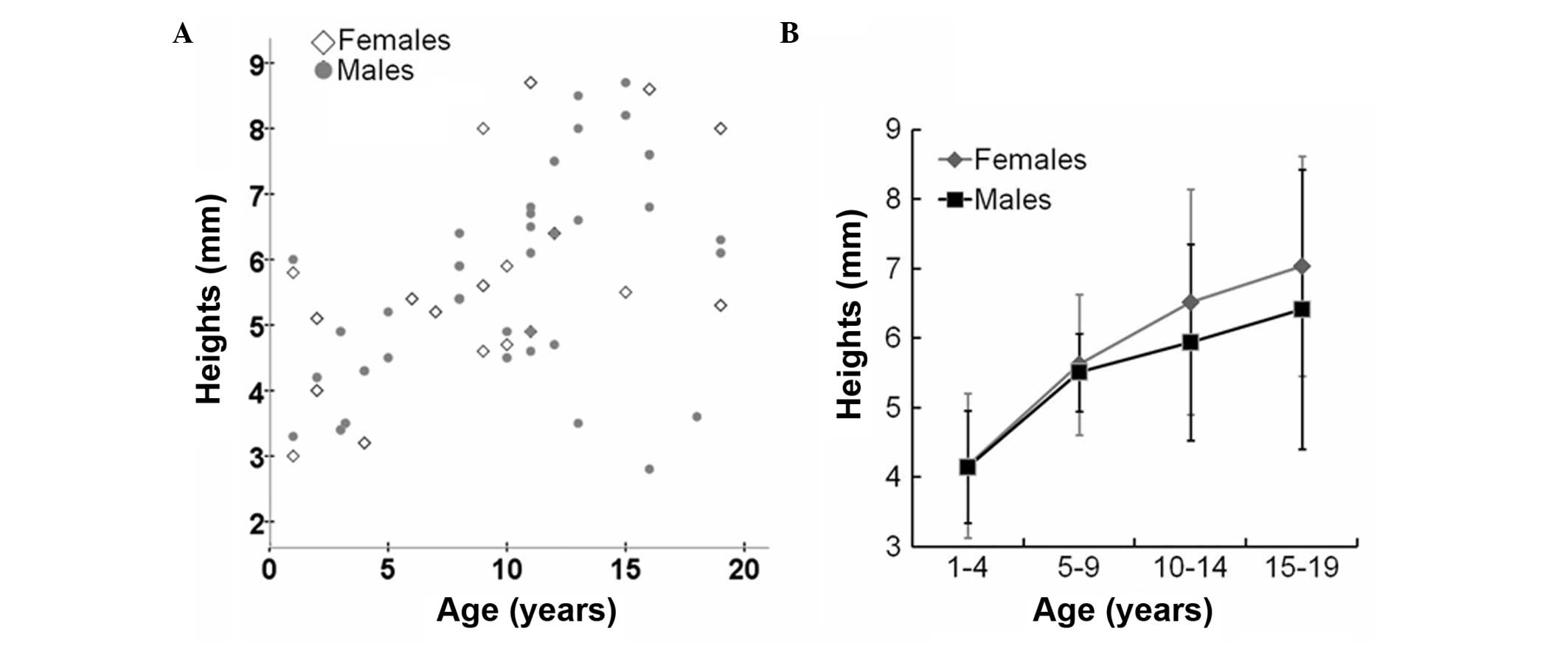Three‑dimensional magnetic resonance volumetry of the pituitary gland is effective in detecting short stature in children
- Authors:
- Published online on: June 11, 2014 https://doi.org/10.3892/etm.2014.1778
- Pages: 551-556
Metrics: Total
Views: 0 (Spandidos Publications: | PMC Statistics: )
Total PDF Downloads: 0 (Spandidos Publications: | PMC Statistics: )
Abstract
The aim of the present study was to obtain standard reference values for the pituitary gland volumes of healthy children and to analyze the potential diagnostic values of pituitary gland volumetry for growth hormone deficiency (GHD) and idiopathic short stature (ISS). The volume of the pituitary gland was measured using a thin‑section three‑dimensional (3D) magnetic resonance imaging (MRI) sequence of magnetization‑prepared rapid gradient echo imaging with a section thickness of 1 mm. A group of 75 healthy children aged between 1 and 19 years were recruited to obtain normal volumetry values of the pituitary gland. These individuals demonstrated no evidence of abnormalities to the central nervous or endocrine systems prior to the study. An additional group of 55 children with GHD (n=32) or ISS (n=23) aged between 0 and 14 years were included in the measurement of pituitary gland volume and height. The Student's t‑test was used to evaluate the repetition test, while Pearson's correlation coefficient and regression analyses were performed to examine the correlations between the volume and height of the pituitary glands. Pituitary gland volume and height demonstrated an increasing trend with age in the healthy children. In addition, the pituitary gland volume exhibited a growth spurt in the early teenage years (10‑14 years‑old), which was more prominent in females. The growth spurt was not observed for pituitary gland height. When compared with the healthy children, 65.6% of the children with GHD and 34.8% of the children with ISS had smaller pituitary gland volumes. Similarly, 37.5% of the children with GHD and 26.1% of the children with ISS had a smaller pituitary gland height compared with the healthy children. The pituitary gland volume performed significantly better compared with height with regard to the detection rate. Therefore, the results indicated that 3D MRI volumetry was useful for understanding the developmental characteristics of the pituitary gland in healthy children, and that the reference data provided by 3D MRI were effective in the diagnosis of short stature following associations with neuroimaging and clinical functional abnormalities of the pituitary gland.












